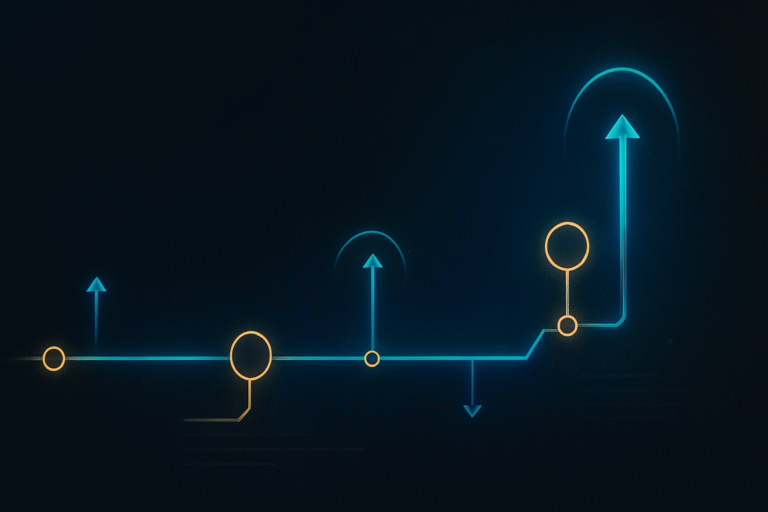AI Transcription FAQ
Welcome to the comprehensive FAQ for AI transcription. Here you’ll find answers to all your questions about how AI-powered transcription works, its benefits, technical details, industry trends, and more. For advanced, accurate transcription services, visit AItranscriptor.com.
General Questions
What is AI transcription?
AI transcription converts audio or speech into written text automatically using artificial intelligence algorithms, including machine learning models and neural networks. AItranscriptor.com utilizes advanced AI models to provide accurate and efficient transcription services for various audio formats.
How does AI transcription work?
AI transcription uses speech recognition models trained on large datasets, converting spoken words into text by analyzing audio waveforms, acoustic patterns, and linguistic context. The process involves feature extraction, pattern recognition, and language modeling to interpret speech signals and generate corresponding text output.
What’s the main benefit of AI transcription?
AI transcription significantly saves time compared to manual transcription (often 4-10x faster), enhances productivity, enables easy searchability of content, reduces costs, and provides consistent availability without human scheduling constraints. Modern AI transcription can process hours of audio in minutes.
Is AI transcription accurate?
Yes, modern AI transcription services can achieve 85-95% accuracy or higher depending on audio quality, speech clarity, and language complexity. However, accuracy varies significantly based on conditions—clear, single-speaker English audio may achieve 95%+ accuracy, while noisy, multi-speaker content may drop to 70-85%.
Has AI transcription improved recently?
Absolutely. With models like OpenAI’s Whisper (released in 2022), accuracy, multilingual capabilities, and robustness against noisy audio have greatly improved. Recent transformer-based architectures and large-language model integration have also enhanced contextual understanding and punctuation accuracy.
Accuracy and Quality
What affects AI transcription accuracy?
Background noise, accents, multiple speakers, audio clarity, speaking speed, technical jargon, audio compression quality, microphone distance, and overlapping speech all impact transcription accuracy. Poor audio conditions can reduce accuracy by 20-40%.
How accurate is OpenAI’s Whisper model?
Whisper significantly improved accuracy over previous models, offering near-human-level precision on clean audio, even on challenging audio clips. It demonstrates particularly strong performance on multilingual content and noisy environments, though “near-human-level” should be understood as 90-95% accuracy under optimal conditions.
Does AI transcription handle different accents well?
Newer AI models like Whisper handle a broad range of accents more effectively than earlier systems, though accuracy still varies considerably. Strong regional accents, non-native speakers, and less common dialects may experience 10-25% lower accuracy rates compared to standard pronunciations.
Can AI transcription understand jargon and technical language?
Yes, but specialized terminology may require custom-trained models, fine-tuning, or post-processing correction. Medical, legal, and technical jargon often need domain-specific models or human review for optimal accuracy. AItranscriptor.comcan handle various specialized vocabularies with appropriate model selection.
Can AI transcription identify multiple speakers?
Yes, speaker diarization identifies and separates speech from different speakers, enhancing readability. However, this feature works best with distinct voices and clear audio separation. Overlapping speech, similar-sounding speakers, or poor audio quality can reduce diarization accuracy to 60-80%.
Practical Usage
Who typically uses AI transcription?
Businesses, students, researchers, journalists, content creators, podcasters, legal and medical professionals, accessibility coordinators, market researchers, customer service teams, and educational institutions. Use cases span from meeting notes to academic research and content repurposing.
How fast does AI transcription work?
Most AI services transcribe audio in real-time or faster, typically processing 1 hour of audio in 2-10 minutes depending on the service and audio complexity. Cloud-based solutions generally offer faster processing than local installations.
Can AI transcription process live audio streams?
Yes, live streaming transcription is supported by many services, enabling real-time captions for meetings, broadcasts, and events. Latency typically ranges from 1-5 seconds depending on processing complexity and internet connectivity.
Does AI transcription support languages other than English?
Modern AI transcription supports numerous global languages—Whisper supports over 90 languages with varying degrees of accuracy. However, accuracy is typically highest for widely-spoken languages like English, Spanish, French, and Chinese, with less common languages showing reduced performance.
What file types can be transcribed?
Common audio and video formats including MP3, WAV, M4A, MP4, AVI, FLAC, AAC, OGG, and WebM. Most services also support compressed formats and can extract audio from video files. AItranscriptor.com supports a wide range of file formats for maximum convenience.
Privacy and Security
Is AI transcription secure?
Professional providers typically use encryption (SSL/TLS) and secure processing to protect audio and transcripts, though security levels vary by provider. Enterprise-grade services offer additional security features like data residency controls and audit logs.
Who owns the data from AI transcription services?
Typically, you retain full ownership and control over your transcripts, but always review provider agreements carefully. Some services may retain temporary copies for processing or use anonymized data for model improvements.
Can I delete my files after transcription?
Most platforms allow you to delete your data permanently, though some may retain copies for backup or legal compliance periods (typically 30-90 days). Enterprise services often offer immediate deletion options.
Do AI transcription providers comply with GDPR?
Reputable providers ensure compliance with GDPR, CCPA, and other privacy laws, including data processing agreements, consent management, and right-to-deletion capabilities. Always verify compliance documentation for sensitive use cases.
Are my conversations being listened to by people?
Not usually. Many AI transcription providers process content automatically without human review, though some services may use human quality assurance for training purposes. Always check privacy policies for human review practices.
Editing and Customization
Can I edit my transcripts?
Yes, most services provide editing tools to refine results after transcription, including text correction, speaker labeling, timestamp adjustment, and formatting options. Some platforms offer collaborative editing features for team workflows.
Can AI transcription add punctuation automatically?
Modern AI, especially models like Whisper, automatically insert accurate punctuation based on speech patterns, pauses, and intonation. However, complex punctuation and formatting may still require manual review and correction.
Can AI transcription differentiate between questions and statements?
Yes, advanced AI transcription recognizes intonation patterns and speech characteristics, correctly inserting question marks, periods, and exclamation points in most cases. Accuracy varies with audio quality and speaking style.
Can I train AI to recognize specific voices or terms?
Yes, some services allow custom training, vocabulary additions, or acoustic model adaptation to improve accuracy for specific use cases, speakers, or terminology. This typically requires enterprise-level plans or specialized services.
Is there AI software that integrates directly with video conferencing platforms?
Yes, AI transcription tools commonly integrate with Zoom, Microsoft Teams, Google Meet, WebEx, and similar platforms through plugins, APIs, or built-in features. AItranscriptor.com offers integration options for popular platforms.
Costs and Pricing
How much does AI transcription cost?
Costs vary widely, typically ranging from free (with limitations) to $0.10-$2.50 per minute of audio, or subscription-based plans from $10-$100+ monthly. Enterprise solutions may cost significantly more but offer additional features and support.
Are there free AI transcription services?
Yes, some services offer limited free transcription options, like Whisper’s open-source model, Google’s limited-time offerings, or freemium tiers with usage caps (typically 10-60 minutes monthly).
Do I pay per transcript or per minute?
Both pricing models exist—pay-per-minute is more common for occasional users, while subscription plans often provide better value for regular users. Some services offer hybrid models with included minutes plus overage charges.
Are there hidden fees in transcription services?
Usually not for reputable providers, but always check for additional charges like expedited processing, premium features, storage fees, or API usage costs. Some services charge extra for features like speaker identification or custom vocabularies.
Can I get bulk discounts for large transcription volumes?
Many transcription providers offer discounted rates for high-volume users, enterprise accounts, or annual subscriptions. Volume discounts typically start at 100+ hours monthly and can reduce costs by 20-50%.
TTS and Related Technologies
What’s the difference between AI transcription and TTS (text-to-speech)?
AI transcription converts audio to text (speech-to-text), while TTS converts text into audio speech. They’re complementary technologies often used together in accessibility applications and conversational AI systems.
Have TTS technologies impacted AI transcription?
Yes, improvements in TTS and transcription mutually accelerate innovation through shared research in speech processing, acoustic modeling, and neural network architectures, increasing accuracy and naturalness in both directions.
Can AI transcription and TTS be combined?
Yes, many applications use both technologies to support accessibility, language learning, content creation, and virtual assistants. This combination enables features like audio translation, voice-controlled editing, and automated content generation.
Technical Questions
Can AI transcription transcribe multiple languages simultaneously?
Advanced models like Whisper can transcribe multilingual audio accurately, automatically detecting language switches within the same audio file. However, accuracy may decrease with frequent language switching or similar-sounding languages.
What computing resources are needed for AI transcription?
Cloud services require no special hardware beyond internet connectivity; local processing benefits from modern GPUs (8GB+ VRAM recommended), fast CPUs (8+ cores), and sufficient RAM (16GB+). Processing time scales with available resources.
Is internet connectivity required for AI transcription?
Cloud-based transcription requires stable internet connectivity; offline transcription is available through local models like Whisper, though with potentially reduced accuracy and feature limitations compared to cloud services.
Industry Trends and Future
How did OpenAI’s Whisper change transcription technology?
Whisper democratized high-quality transcription by providing an open-source solution with improved multilingual support, noise tolerance, and accuracy. It also raised industry standards and accelerated competitive improvements across providers.
Is AI transcription technology advancing rapidly?
Yes, driven by transformer architectures, larger training datasets, multimodal AI integration, and improved speech processing techniques. Accuracy improvements of 10-20% annually are common, with expanding language and feature support.
Will AI eventually replace human transcriptionists entirely?
AI increasingly handles routine transcription tasks, but human oversight remains essential for specialized content, legal requirements, creative formatting, contextual interpretation, and quality assurance in critical applications.
What’s next for AI transcription?
Continued improvements in real-time processing, emotion recognition, better handling of conversational speech, integration with large language models for enhanced understanding, and specialized models for specific industries and use cases.
Accessibility
How does AI transcription help accessibility?
AI transcription enhances accessibility by enabling automatic captions, real-time subtitling, searchable audio content, and assistive technologies for deaf, hard-of-hearing, and learning-disabled users. It also supports multiple output formats for different accessibility needs.
Can AI transcription support deaf or hearing-impaired users?
Absolutely—accurate captions and transcripts significantly improve accessibility for deaf and hard-of-hearing users. Real-time transcription enables participation in live events, meetings, and conversations that would otherwise be inaccessible.
Legal and Compliance
Is AI transcription admissible in court?
AI transcripts may be admissible as evidence, but accuracy verification, human review, and proper chain of custody documentation are typically required. Legal standards vary by jurisdiction and case type, often requiring certified human review for critical applications.
Does AI transcription comply with HIPAA?
Some specialized providers offer HIPAA-compliant transcription services for healthcare, including business associate agreements, encrypted processing, audit logs, and secure data handling procedures. Standard consumer services typically do not meet HIPAA requirements.
Miscellaneous General Questions
What are some popular AI transcription tools?
OpenAI Whisper, Otter.ai, Descript, Google Cloud Speech-to-Text, AWS Transcribe, Microsoft Azure Speech-to-Text, Rev AI, Speechmatics, and AssemblyAI. AItranscriptor.com provides access to multiple AI models for optimal results.
How do I choose an AI transcription service?
Consider accuracy requirements, pricing structure, processing speed, language support, integration capabilities, privacy policies, compliance needs, editing features, customer support, and specific use case requirements like speaker identification or technical vocabulary.
Are AI-generated transcripts searchable?
Yes, text transcripts make audio content fully searchable and indexable by search engines, enabling content discovery, keyword analysis, and automated content organization. This is particularly valuable for large audio libraries and content databases.
Can AI transcription transcribe song lyrics accurately?
AI can transcribe song lyrics, though accuracy varies significantly with music complexity, vocal clarity, instrumental volume, and lyrical speed. Clean vocals with clear pronunciation typically achieve better results than heavily produced or fast-paced music.
Can transcription AI handle noisy environments?
Modern models like Whisper excel at processing noisy audio more effectively than earlier systems, using noise reduction and advanced signal processing. However, extremely noisy environments may still require audio preprocessing or specialized noise-robust models.
What is real-time AI transcription?
Real-time transcription converts speech instantly to text as it is spoken, with minimal latency (typically 1-5 seconds). This enables live captions, meeting notes, and interactive applications, though accuracy may be slightly lower than post-processing transcription due to time constraints.




